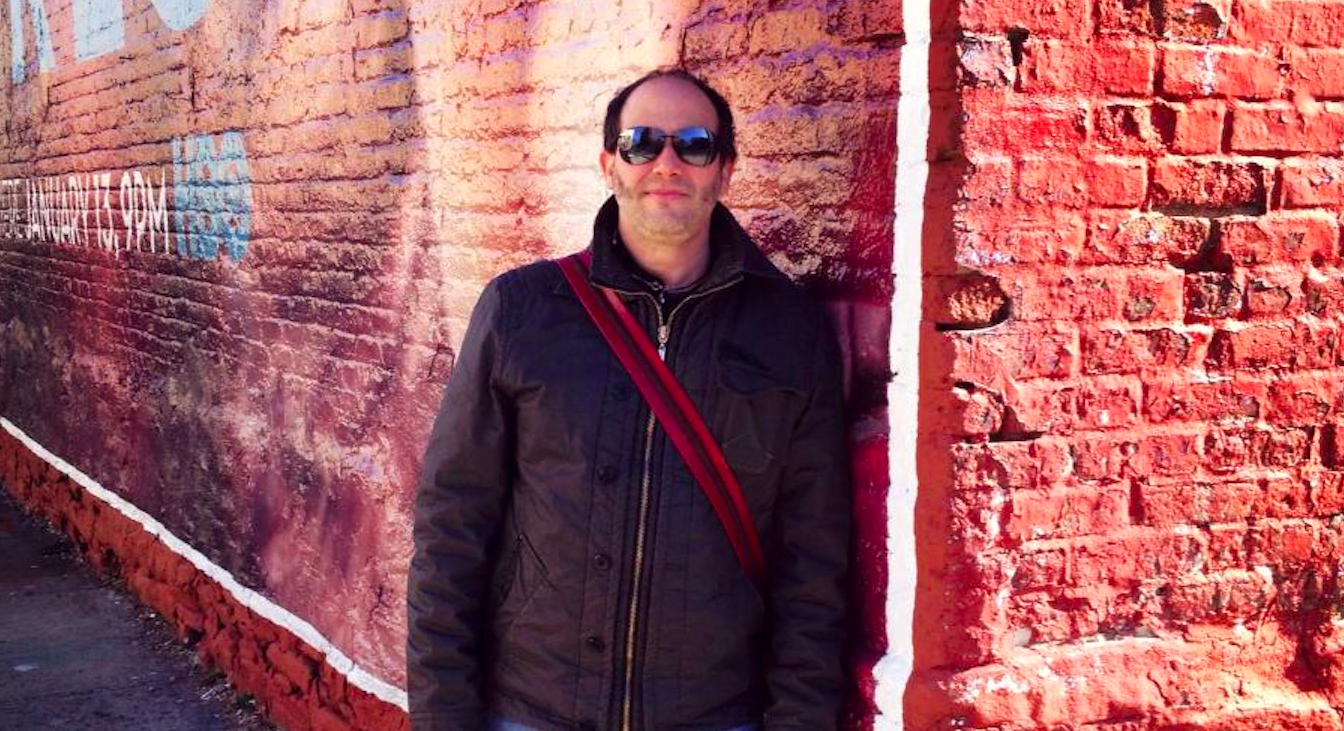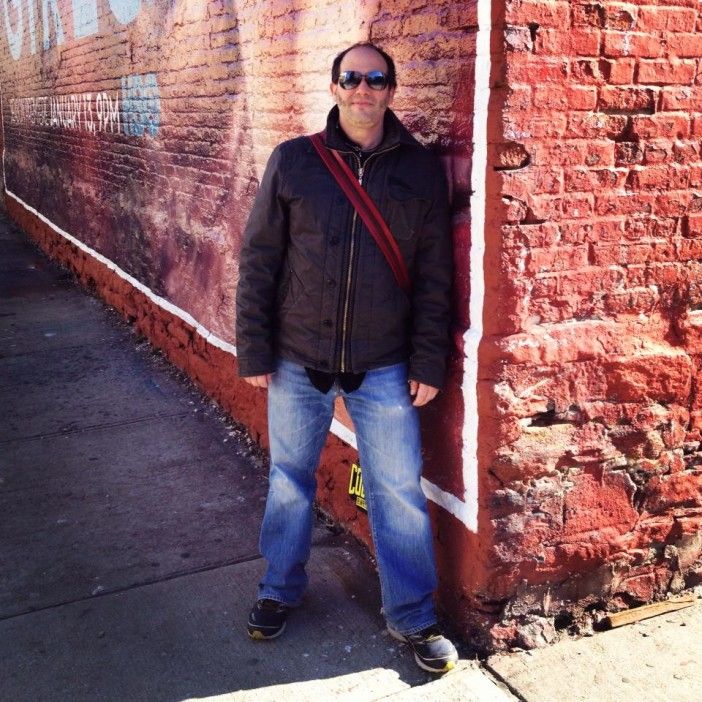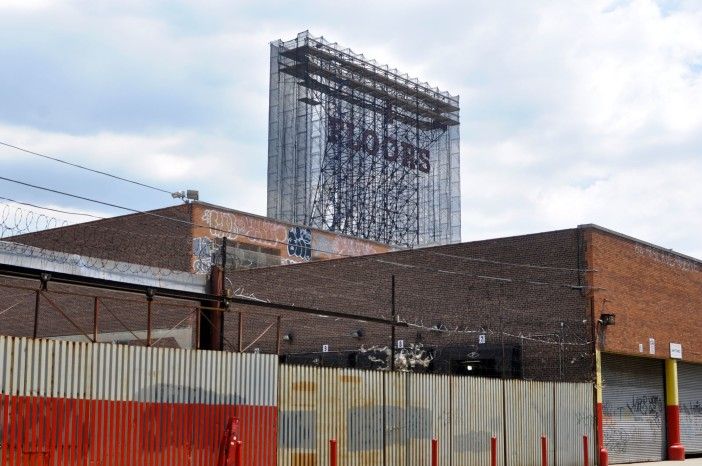Local Author Donny Levit On Theater, Music & How Brooklyn Inspired The Stories Of “Rock N’ Roll Lies”


There are a million stories to tell in the city that never sleeps, which, for a writer, can be all the motivation you need to get to work. For Kensington-based author Donny Levit, it was certainly some of those details — the history, the community, the unusual bits that make the city, and Brooklyn in particular, unique — that helped inspire his new collection of short stories, Rock n’ Roll Lies.
We’re fortunate enough to call Levit both neighbor and colleague — he’s the editor of our sister sites, Park Slope Stoop and South Slope News. In advance of the book’s release party coming up on November 14, we turned the tables and put him in the interviewee seat, and asked him about what some of those inspirations were, how his theater background helped inform his writing, what songs we should be listening to while reading the book, and more (including: getting him to pin down his choice for the best bagel in the area!).
KBK: We know you’re skilled as a journalist, but what’s your background in creative writing?
Donny Levit: Well, thanks for that. I love writing about the Slopes.
My background is in the theater — primarily as a director. I’ve always been attracted to plays with large casts, sweeping narratives — Shakespeare and the Greeks. I suppose I needed breaks from the big productions, design, and technical experiences. So I started writing very small plays — often two characters. These were the opposite of epic structure. I was using film components, too. I love shooting on Super 8. Low-fi, grainy, gritty — the opposite of epic.
The early ones I wrote were visual pieces. If you saw the play on the page, it might look more like a “game plan” than a script. But later on, I started writing tons more words. And if you looked at those scripts, they looked like short stories. No stage directions — that would always get worked out in rehearsals with collaborators. So I guess these text-heavy plays pushed me to the short story format.
In the 2000s, I often worked with the same collaborators. So when I’d write something new, they could help me articulate it. I’ve worked with Kimberleigh Weiss-Lewit for about 15 years. She has been one of my main collaborators for Rock n’ Roll Lies.
Do you remember the moment that was the seed that launched this book? Can you describe what it was, and the evolution of the overall grand plan from there?
I didn’t really plan to write a book. One of the stories in the book — Sweet Spot — was an idea from more than a decade ago. I had workshopped it with actors, didn’t know what to do with it, made a file, and hoped I would figure out what to do with it sometime. I finally got back to it.
Actually, a lot of the titles often came before the stories did. There is an actual “Mohel to the Stars” somewhere in L.A. I just had to figure out a way to write a story called Mohel to the Stars. Starbux Bladder was an early title, too.
The Kentile Floors sign was being disassembled when I was writing. I loved that sign so much. I always craned my neck to catch a glimpse of it at 4th Ave/9th Street or Smith/9th Street on the F. When it disappeared — well, it became a big deal in the short stories. In one of the stories, Comic Sans font actually destroys the sign.

The characters in Rock & Roll Lies have roots in some of Brooklyn’s lesser-known neighborhoods — from Gravesend to Midwood to Coney Island. Can you tell us why you were drawn to these Brooklyn backdrops, and how you researched them for the book?
I like to go running, and Midwood is close enough to where I live that it is often on my route. I see a lot of Orthodox or Hasidic kids. Sometimes, I notice one or two who have a mischievous look in their eye. And I love mischievous people. My wife once took a photo of an Orthodox boy roller-skating backwards in our neighborhood. Man was he shaking his tush! So I think Even Stephen + Bloody Mary was born there.
The story Disco Fries features Coney Island, but one of the characters in the freak show also comes from Gravesend. The history of Gravesend is fascinating. It was originally a Dutch colony and was founded by Lady Deborah Moody. She was the first female landowner in what we consider the “New World.” And she was tough. Heck, she had to deal with all those men. I think Lady Moody is why Gravesend will always be a curious place.
Coney Island is just odd and wonderful. I like it best in the early mornings when it’s deserted. It’s even weirder, in a really good way. It’s like a theater with a ghostlight on. No one’s there but everyone’s there.
What was your writing process like — did you work at home (and if so, how hard was that to fit in and still have a family life?) or did you ever set up in a local cafe (if so, where?)?
I remember beginning to write soon after my son was born (he’s about 20 months now). But since I was writing on the train, it was somewhat compartmentalized. With little exception, these stories were written on the F train somewhere between Church Avenue and 47-50 Rockefeller Center.
I started to write on my phone. I really couldn’t use anything larger because the F is so stuffed. But I always like listening to the people around me, you know, snippets of conversation. Actually, I began missing stops. I once went as far as 21st Street-Queensbridge one morning. I’m pretty sure I wound up at Avenue I in the other direction a few times.
I’ve always found that listening to words read aloud is helpful. So theater came back around. I gathered some amazing actors together and we rehearsed and then had readings of them at Spoke the Hub’s Gowanus Arts Building.
People would come and have wine, beer, or Cel-Ray (another key element in the stories) and listen to the plays. We did two sets of readings – one in October 2014 and the other in May 2015. The story Sucka Punch appeared in a separate reading in Manhattan. Kim, Max, Mark, and Jon were phenomenal, generous collaborators. And the folks at Spoke the Hub are amazing and supportive folks.
Editing happened in neighborhood cafes. I did a ton of editing at Lark Cafe (1007 Church Avenue). There’s something about Lark – its clean lines and uncluttered space – that helps me to think. I also edited a lot at Venticinque Café (162 5th Avenue) in Park Slope. They’re so nice, and you don’t feel rushed.
What have some of the benefits been to self-publishing? And the challenges?
The quote I use at the beginning of the book is by Mike Watt — the killer bassist of the Minutemen and later fIREHOSE. The Minutemen were part of the low-fi punk scene. Like Minor Threat, and later Fugazi, it was all D.I.Y. aesthetic. Do it yourself. Watt’s quote is “We jam econo.” We do it ourselves, cheaply, on our own terms, surrounded by people we really care about and respect. So self-publishing is jamming econo.

It’s only been out for a short time, but what’s been the coolest thing to happen, regarding the book, since its release?
The coolest thing is holding the book in my hand. When you’re doing theater all over the place — well, it’s what happens on the stage in that space with that audience on that night. No one else experienced it. I can approximate the production with photos, but I never could say to everyone in my life, “Hey, I did this, check it out.” Theater is awesome, but it’s so fleeting. With a book, it’ll always be there for someone to read. It’s tangible.
Any plans for a reading in the area?
We’ll be doing a book launch party on Saturday, November 14 at 440 Gallery from 7-8:30pm. There will be a very short reading with the actors who originally read the stories (Max Arnaud and Kimberleigh Weiss-Lewit). The book will be for sale there with a slight discount. It’s a free event, and there will be wine, cheese — and Cel-Ray, of course. And David Stock’s exhibition will still be on, so you can check out his fantastic work, too.
We can’t not talk a little about rock and roll. Can you give us a 5- to 10-song soundtrack that we should listen to while reading the book?
Usually, that would be a hard question, but it’s easy this time. In the book, I placed a song at the beginning and end of each story. So here’s the soundtrack for it:
“Now I Wanna Stiff Some Glue” by The Ramones
“Coney Island Baby” by Lou Reed
“Sugarcube” by Yo La Tengo
“Champs” by Wire
“Thank You For Sending Me An Angel” by The Talking Heads
“I Must Soon Quit The Scene” by The American Analog Set
“Gratitude” by The Beastie Boys
“O My Soul” by Big Star
“Working Man” by Rush
“Gold Soundz” by Pavement
“Dirt” by Tobacco
“Search” by The Minutemen
“Shadow of A Doubt” by Sonic Youth
“Some Kinda Love” by The Velvet Underground
“Kick Out The Jams” by MC5
“Heavy Metal Drummer” by Wilco
“Pass The Hatchet, I Think I’m Goodkind” by Yo La Tengo
“Sunny Afternoon” by The Kinks
“Hindsight” by DJ Shadow
“The World Looks Red” by Sonic Youth
You’ve been a resident of Kensington for a few years, and your family is also from Brooklyn. What’s one place you remember fondly from visiting as a child, and one place you can’t live without now?
When I was a kid, we had Passover at my Great Aunt Ethel’s apartment. She was on St. Paul’s Court, near the Parade Ground. Barry Manilow’s folks lived in the building and they came to Seder. They gave me Fisher Price toys and Barry’s records. My Great Uncle Artie rolled up his sleeve one time and showed me his prison number tattoo from being in a concentration camp. So I learned some things there. And the street still looks how I remember it.
My liquor store at Cortelyou and East 5th Street sells Armenian brandy. The brandy doesn’t come in regular bottles. One comes in a glass pistol, another a life-sized Kalashnikov rifle. There’s a glass slipper one you can drink out of. I’m amused and disturbed when I see them.
And Hot Bagels and Deli on Church Avenue between East 4th and East 5th. I’m not even sure that’s what it’s called. They make one of the best bagels I’ve ever had and not a lot of folks know about it. They’re good guys, remember your order so you don’t have to say it, they call you boss. Old-school.
Anything else you’d like neighbors to know?
I have a lot of my neighbors to thank. And neighborhoods. The stories are set in Coney Island, Ditmas Park, Kensington, Midwood, Park Slope, South Slope, Williamsburg… I may be missing a few. Some of the comedic quirks and oddities in these stories come from the people on the streets. But my neighborhood — Kensington — I don’t think enough people realize how funny it is around here.
Rock n’ Roll Lies is out now — copies are available for purchase online at Amazon, and at Greenlight Bookstore in Fort Greene, or you can pick one up at the book release party at at 440 Gallery, 440 6th Avenue in South Slope, on Saturday, November 14 from 7-8:30pm.




